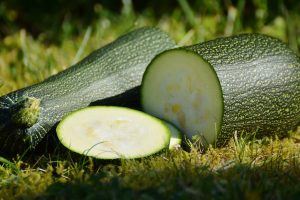In this guide, we’ll help you understand the optimal planting times, seasonal considerations, and tips for successfully cultivating marigolds.
Understanding Marigolds and Their Growth Cycle

Before diving into the specifics of planting, it’s essential to understand the lifecycle of marigolds. These versatile flowers belong to the Tagetes genus and can be categorized into several varieties, such as the French marigold (Tagetes patula) and the African marigold (Tagetes erecta). With lifespans ranging from annual to perennial, marigolds typically bloom from spring until the first frost, offering a long period of bright color.
The growth process begins with germination, usually occurring within 7 to 21 days after planting. Following germination, marigolds will develop into seedlings before reaching full maturity. The lifecycle of marigolds typically spans about 12 weeks from planting seeds to blooming, making timing a crucial aspect of successful gardening.
When to Start Marigold Seeds Indoors

Starting your marigolds from seeds indoors can give you a head start on the growing season. The best time to sow marigold seeds indoors is about 6 to 8 weeks before the expected last frost date in your area. Depending on your geographical location, this may vary; for example:
If you live in USDA Zone 5, your last frost date might be around mid to late May. Thus, you would begin sowing seeds in late March to early April.
For regions in USDA Zone 8 or 9, where the last frost occurs earlier in April, starting seeds in early to mid-March would be ideal.
To ensure optimal germination, choose a seed starting mix that provides good drainage and moisture retention. Plant the seeds about ¼ inch deep in biodegradable pots or seedling trays. Place the trays in a warm area with plenty of light; you may want to use grow lights if natural sunlight isn’t sufficient.
Transplanting Marigolds Outdoors
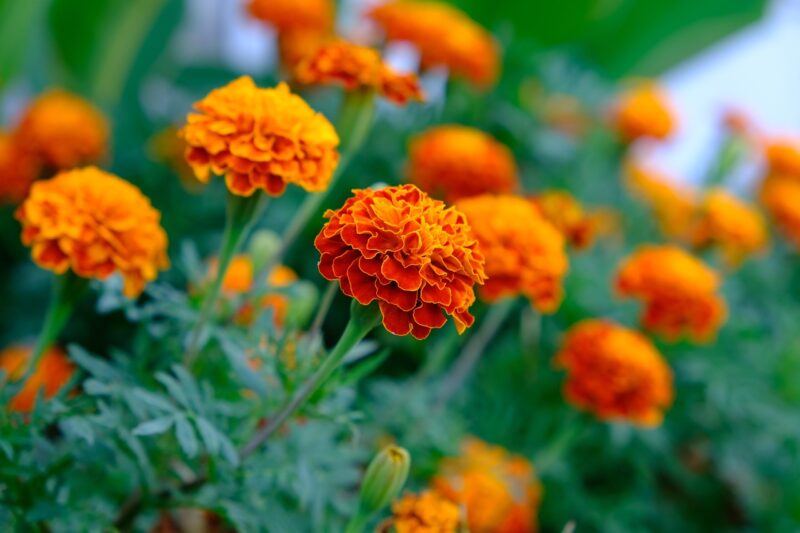
Once your marigold seedlings reach about 2 to 4 inches in height and develop several set of leaves, they are ready for transplanting outdoors. However, it’s critical to wait until the danger of frost has passed.
Before transplanting, harden off your seedlings to help them acclimatize to outdoor conditions. This process involves gradually exposing them to sunlight and outdoor temperatures over a week, starting with just a couple of hours each day and gradually increasing the time outside.
The timing for transplanting can again vary based on your location:
In colder regions, you should plan to transplant your marigold seedlings around late May to early June.
For warmer climates, mid to late April would be preferable.
Make sure to select a spot with full sun exposure, as marigolds thrive best in direct sunlight for at least 6 hours each day. Space the plants about 10 to 12 inches apart to encourage good airflow and prevent fungal diseases.
Direct Sowing Marigold Seeds
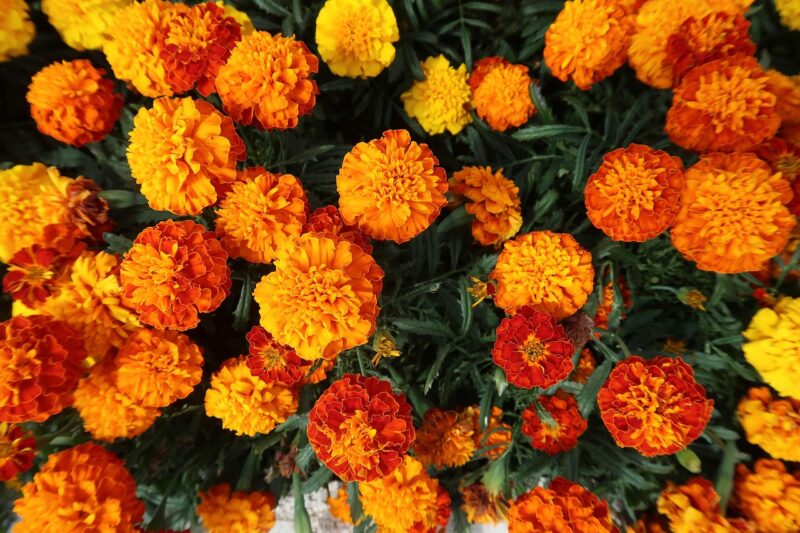
For those who prefer an easier and more straightforward approach, directly sowing marigold seeds into the ground is an excellent option. You can plant marigold seeds outdoors after the last frost date has passed and the soil has warmed. Like indoor sowing, it’s best to time this based on your local climate.
In many gardening zones:
Late spring is typically when you’d sow seeds directly in well-prepared soil, around late April or early May in cooler areas.
In milder climates, you might consider direct sowing in mid to late March if your soil temperature reaches around 65°F.
When direct sowing, plant the seeds about ¼ to ½ inch deep and cover them lightly with soil. Water them gently to keep the soil moist but not soggy. As they mature, you’ll enjoy watching the transformation from seeds to stunning blooms over the weeks.
Seasonal Considerations for Planting Marigolds
Understanding seasonal influences can significantly enhance marigold growth. Marigolds are generally frost-sensitive; hence, planting them at the right time of year is crucial.
Spring Planting: This is the primary season for marigolds. The warmth of spring encourages quick germination and robust seedling growth. As the danger of frost lifts, both indoor starts and direct sowing become viable.
Summer Maintenance: If planting in late spring, marigolds will thrive throughout the summer. Pinching back the tips can lead to bushier plants and extended blooming periods.
Fall Considerations: In many regions, marigolds continue to bloom until the first frost of autumn. You may consider planting a second batch in late summer to ensure vibrant colors into the fall.
Choosing Varieties Based on Climate and Time
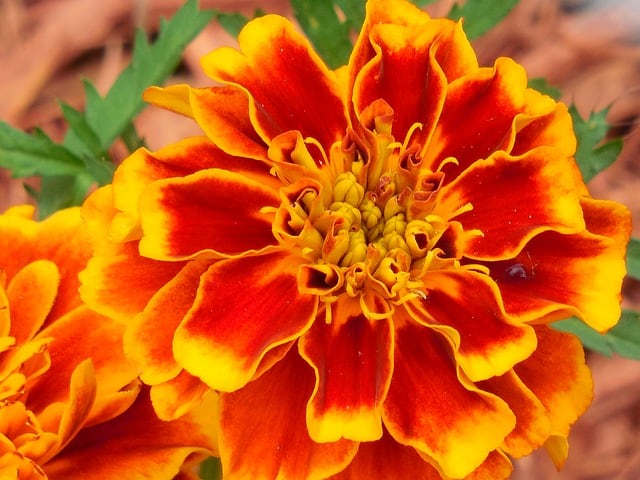
Different marigold varieties have varying requirements and characteristics. Choosing the right variety can also influence the timing of your planting. Here are a few popular types:
French Marigolds (Tagetes patula): These are compact and ideal for urban gardens or containers. They tend to have a shorter growing season and can be directly sown once temperatures are warm enough.
African Marigolds (Tagetes erecta): These tall marigolds are excellent for borders or as a standout feature in garden beds. They require a longer growing season and are typically started indoors.
Signet Marigolds (Tagetes tenuifolia): These smaller marigolds have finer leaves and a more delicate appearance. They are great for companion planting due to their pest control properties and have a relatively quick time to bloom.
Understanding the characteristics and requirements of different varieties will enable you to plan your planting more effectively and choose the option that best suits your garden and local climate.
Soil Preparation and Planting Tips

To ensure a successful marigold planting, preparation is key. Here are some practical soil preparation and planting tips:
Well-draining Soil: Marigolds thrive in loose, well-drained soil. Consider amending your garden bed with compost or aged manure to enhance soil fertility.
pH Levels: Aim to maintain a slightly acidic to neutral pH (around 6 to 7) for optimal growth. Conduct a soil test if you’re unsure and adjust with lime or sulfur as needed.
Spacing: When transplanting or direct-sowing, providing adequate space (usually 10 to 12 inches apart) is essential to assure air circulation. This helps prevent fungal growth and encourages healthy plants.
Watering Practices: Water the marigolds thoroughly after planting but avoid overly saturated soil. A consistent watering schedule ensures they remain hydrated, especially during dry spells.
Companion Planting with Marigolds
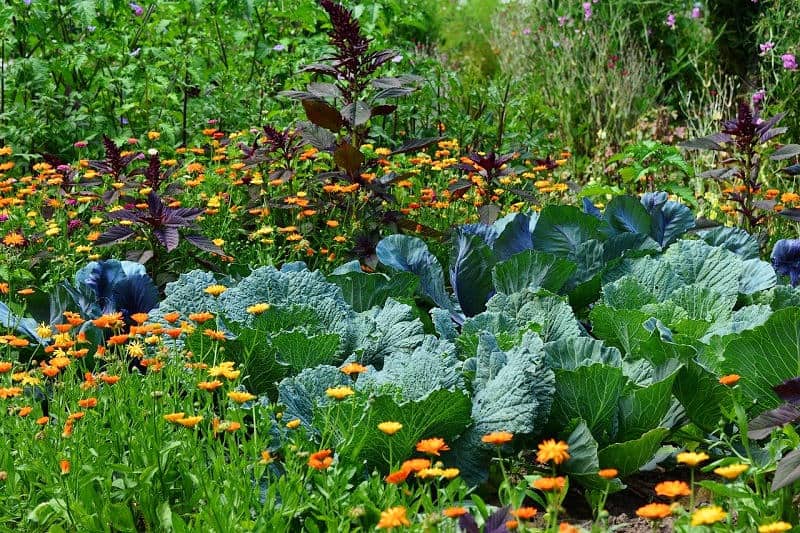
Marigolds play an essential role in companion planting, which can affect when and where to plant them. Their pest-repelling qualities make them an ideal companion for various plants in your garden.
For instance, marigolds are known to deter nematodes and aphids, making them excellent neighbors for tomatoes, peppers, and squash. Here’s more about how to plant marigolds alongside other plants for the best results:
Vegetable Gardens: Integrating marigolds in vegetable gardens not only enhances visual appeal but also contributes to pest control while attracting beneficial insects like ladybugs and lacewings.
Flower Beds: Planting marigolds among other flowering plants can deter pests while allowing their vibrant colors to accentuate neighboring flowers.
Herb Gardens: Marigolds can also thrive alongside culinary herbs like basil and oregano, improving overall garden health and aesthetics.
Extending the Blooming Season
To maximize the flowering period of marigolds, consider these practices:
Deadheading: Regular removal of faded blooms encourages the plant to produce more flowers and prolongs blooming.
Fertilization: While marigolds are not heavy feeders, applying a diluted balanced fertilizer every month can boost growth and flowering.
Mulching: Applying mulch around the base can help retain soil moisture, regulate temperature, and control weeds.
Conclusion: Your Marigold Journey Awaits
Marigolds are indeed a delightful addition to any garden, offering vibrant colors and a plethora of benefits. The key to successfully growing them lies in understanding the appropriate times for planting, taking into account your local climate and soil conditions.






